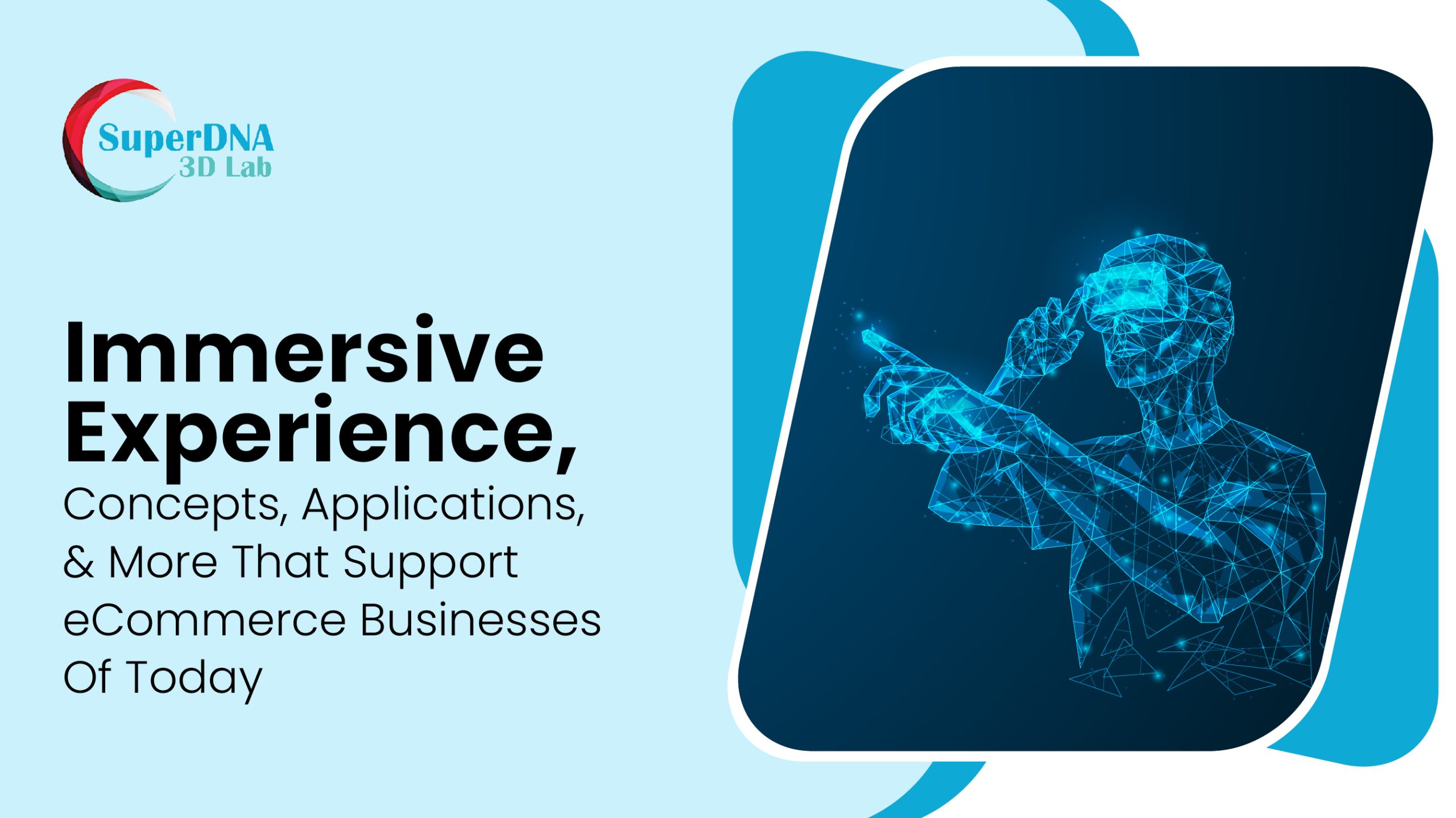
The World Wide Web is a fantastic source for various immersive experiences. The way it has integrated technologies such as augmented reality, virtual reality, mixed reality, and the Metaverse has really piqued the interest of the common man.
To further create more hype and excitement, various furniture, fashion, makeup, and jewelry brands have entered the scene making extensive use of 3D elements and all the technologies mentioned above.
As a result, the consumer who was constantly connected to the internet now seeks more simulations. He wants several virtual yet enriching experiences. But there should be no compromise on his comfort and convenience. He wants immersion at the next level.
The sophisticated concept that gives birth to “Immersive Experience” is Immersion. However, it is not a new concept but is being developed further by tech giants such as Microsoft, Google, and Meta.
These are digital simulated experiences that enhance the overall appeal of any product or service that an online retailer is trying to sell.
Understanding Immersive Tech Of The Present
The immersive technology of the present makes use of virtual content and three-dimensional objects derived from either the real world or fabricated completely from imagined elements. It also makes use of sounds, vibrations, and touch responses, and blends them all together with your reality. In essence, immersive tech creates an entirely different realm for you to experience a certain product or service in all its glory. Over the years the application of immersive technology has widened across sectors and industries. Right now some of the industries that have been using this technology extensively are fashion apparel, furniture E-Commerce, healthcare, gaming, art & entertainment, education, interactive storytelling, and many more.
Virtual Reality
Virtual reality is a very strong medium to ensure immersive experiences. You can use 3-dimensional computer-generated imagery and content and also moving elements to create a virtual world for your customers. VR systems such as headsets, earphones, glasses, touch screens, gloves, and other haptic sensors can be used to create a virtual world of various perceptions, cognitions, and emotions. A few examples are the very popular Oculus Quest, Samsung Gear VR, and HTC Vive.
Augmented Reality
This is somewhat of a mixed experience that enhances your real world by adding filters and overlays of 3D elements and other fantastical creations. This is where you augment your actual reality and portray the same either on a display or view it through your smartphone and other gadgets. It is basically superimposing images, videos, and sounds onto your real life with the help of applications, filters, and much more. The Google Glass, Microsoft Hololens, and the Vaunt Smart Glasses by Intel are a few examples.
Now let’s talk about a few very common platforms, portals, websites, and applications that make use of virtual reality and augmented reality to support immersive experiences.
- 3D Product Configurators
A 3D product configurator creates a higher perception value of your products and opens a doorway to a higher degree of immersion. It allows your customers to give a more personal touch to the product by adding more features, editing their colors, textures, and shapes, and also sharing the same on social media to get validation. The same configurator functions as a gold mine of customer insights and data for your company.
- AR Try On Apps
AR try-on apps were first made popular by brands like IKEA. This is where customers could easily re-imagine their space using their 3D/virtual furniture pieces to populate their interiors. This was the start of a unique customer experience that eliminated the cognitive overload of prospects willing to shop for furniture pieces online. Ever since there have been practically countless furniture brands that have benefited from the same technology. AR try-on apps allow your customers to view your furniture pieces or fashion apparel in action by superimposing them on their real environment using their smartphone camera.
- Virtual Room / Space Decorators
Room or space decorators are a totally different kind of immersion altogether. They offer a higher degree of sensory pleasures that are the closest to life-like experiences. Virtual reality as explained above uses several hardware components. It requires a lot of initial investment as compared to other media but the result is phenomenal.
- 360-Degree Product Viewers
360-degree product viewers are a dialed-down version of 3D product configurators. They allow your customers to view the product from every angle. You can use preset videos and images to give your consumers a better view of all the variations of a particular product as well. It reduces your overall returns, increases conversions, and enhances product presentation all the while slashing down your marketing time.
- Web Enabled AR
Web-enabled AR is when you use augmented reality with your website. It is relatively a new technology and it eliminates the need to have a dedicated mobile application. It is generic and proves to be compatible with most web browsers. There are no downloads, no applications, and no special features that are required to run web-based AR. These experiences are easy to build and fast to deploy.
In The End…
Immersive experiences are what your customers have started to value more than anything else when shopping online. They don’t just depict your products in the most impressive light but also encourage your customers to shop with you almost instantly. If you haven’t yet ventured into the sphere of immersive technology, the time is right now.